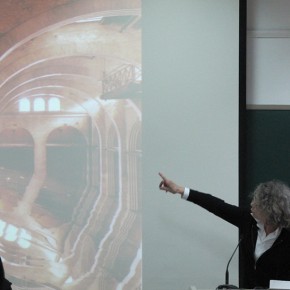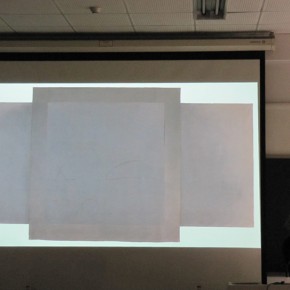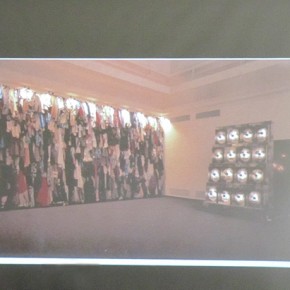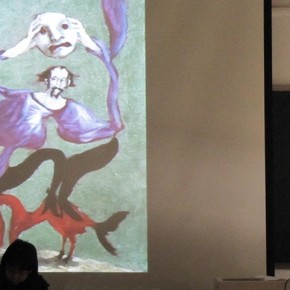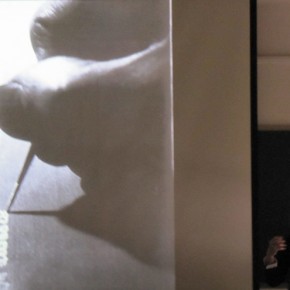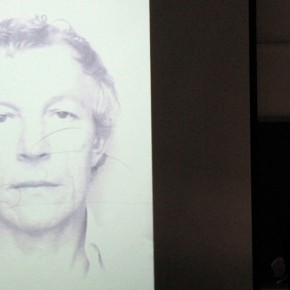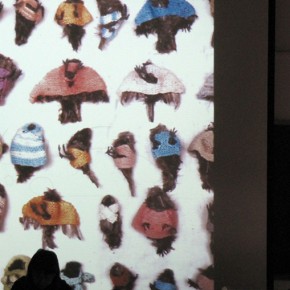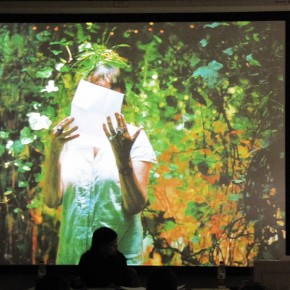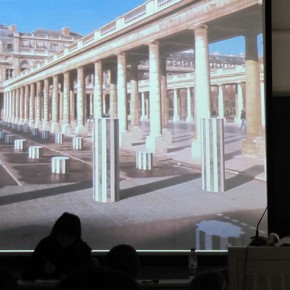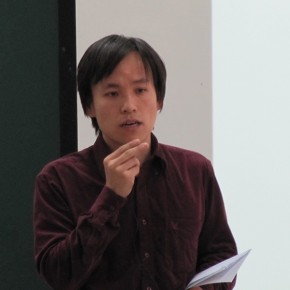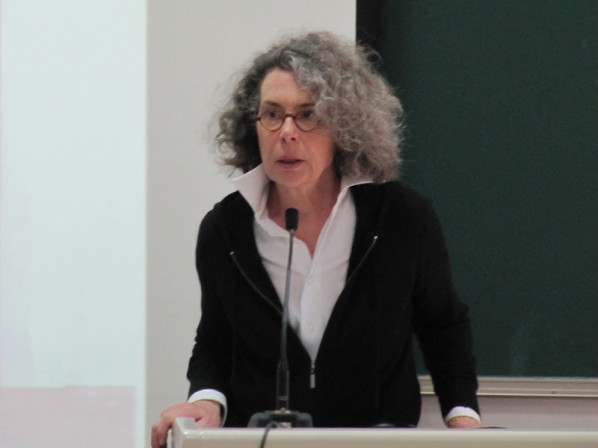
Professor Daniele Bloch
Sponsored by the School of Humanities, CAFA, the lecture “Contemporary French Art” was held in Room 107 of Building 5, at 16:00, on April 26, 2013. Presided over by Dr. Yu Runsheng, Professor Daniele Bloch, from the Louvre College, was invited to give a lecture on contemporary French art. She not only works in the school, but is also a curator and consultant, etc. Bloch mainly researches the history of art from the 19th century through to the 20th century, and this is the second time that she was invited to lecture in CAFA.
Through introducing the works of the major representatives of contemporary French artists, the audience had a better understanding of contemporary French art. She pointed out that because of domestic policy issues, French contemporary art had hardly been encouraged to produce outputs, so that the United States accounted for the dominance in contemporary art after World War II, though, there were a lot of outstanding artists in France. Bloch initially introduced Daniel Buren born in the 1930s, one of the most internationally influential artists. Buren used the striped “free canvas” in his creation, instead of using a brush, and the width of the stripes had a fixed pattern in his works, which precluded personal feelings when he created, so it’s a typical “non-personalized art”. Buren set up an art group in 1967, all members of the community had to follow the painting principle of “Zero”, painting without a brush, the intention was to show the most essential characteristic of the material. In his late years, Buren transformed his art into a genre of “Field Art”, shifting the location from galleries and art museums to streets, outdoor spaces, etc. Born in 1930s, Clyde Villar was also in pursuit of the “Zero” effect, but he made use of painting, in a casual form, and he hoped to render the various textures and senses of form. He also established an art group, called material surface group, the last team of great influence in the French contemporary art, whose works fought against the American Abstract Expressionism, excluding emotional factors, mysticism and symbolism, in addition to the characteristic of the “Zero” painting. Louis Cana, a member of the material surface group, created large scale works, his presentation forms were still in the range of painting, but the creative method shifted from “hand-drawn” to “printing”, the majority of works were in an abstract form, similar to Roscoe(USA), etc. The majority of the works of Christian Boltanski were strongly conceptual, and the themes were related to life, death, memory, etc., as well as the experiences the boy had during World War II.
Different from the above artists, Gerard Jarvister, was a painter of profound learning. His works continued in the classical tradition, creating a sacred atmosphere. Jean - Michelle Ottenier was an artist of the new generation, born in the 1960s, the genres of his works including sculpture, video, photography and so on. The most representative works of the artist were his decorative art with a combination of sculpture and jewelry, at the same time, it was also a “field art” due to the scattered display of his works.
After that, Professor Bloch talked about the two representatives of the female artists, Annette Messager and Sophia Tarlo. Annette Messager was the wife of Boltanski, and her works were a strong art feature of feminism. Sophia’s works mainly focused on photography, video, and performance, being full of provocation and more personal, doping the complex emotion of a woman. Finally, Bloch briefed the summary of the status of the French contemporary art, she thought the figurative or abstract painting had fewer than the majority of contemporary works which were more personal and diversified. Meanwhile, along with the gradual disintegration of art groups in the second half of the last century, more and more artists preferred to appear as independent artists, which was of benefit to the study of the history of art.
Text and image by Journalist: Sun Tianyi, translated by Chen Peihua/ CAFA ART INFO


